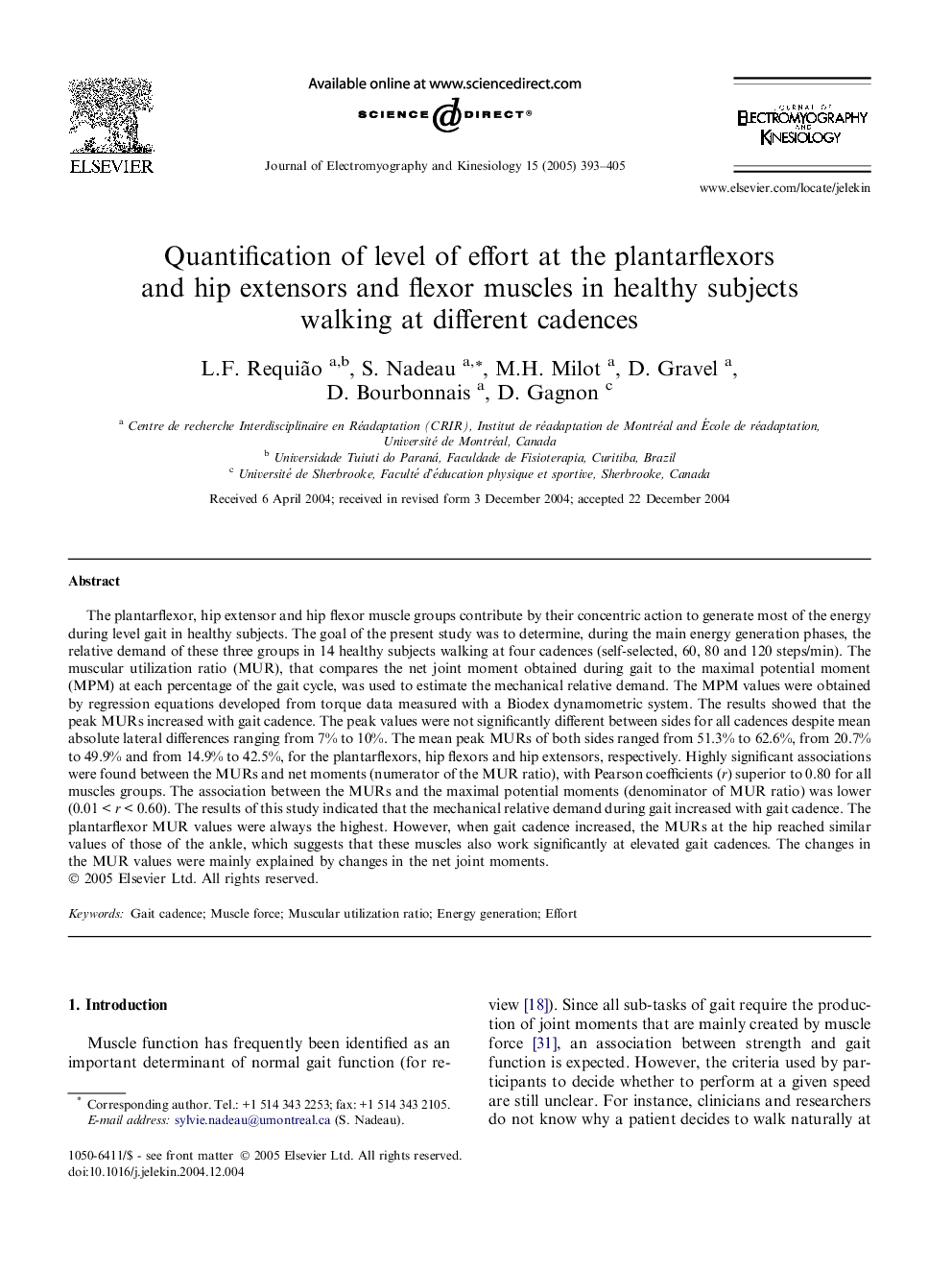| کد مقاله | کد نشریه | سال انتشار | مقاله انگلیسی | نسخه تمام متن |
|---|---|---|---|---|
| 9353599 | 1266270 | 2005 | 13 صفحه PDF | دانلود رایگان |
عنوان انگلیسی مقاله ISI
Quantification of level of effort at the plantarflexors and hip extensors and flexor muscles in healthy subjects walking at different cadences
دانلود مقاله + سفارش ترجمه
دانلود مقاله ISI انگلیسی
رایگان برای ایرانیان
موضوعات مرتبط
علوم پزشکی و سلامت
پزشکی و دندانپزشکی
ارتوپدی، پزشکی ورزشی و توانبخشی
پیش نمایش صفحه اول مقاله

چکیده انگلیسی
The plantarflexor, hip extensor and hip flexor muscle groups contribute by their concentric action to generate most of the energy during level gait in healthy subjects. The goal of the present study was to determine, during the main energy generation phases, the relative demand of these three groups in 14 healthy subjects walking at four cadences (self-selected, 60, 80 and 120 steps/min). The muscular utilization ratio (MUR), that compares the net joint moment obtained during gait to the maximal potential moment (MPM) at each percentage of the gait cycle, was used to estimate the mechanical relative demand. The MPM values were obtained by regression equations developed from torque data measured with a Biodex dynamometric system. The results showed that the peak MURs increased with gait cadence. The peak values were not significantly different between sides for all cadences despite mean absolute lateral differences ranging from 7% to 10%. The mean peak MURs of both sides ranged from 51.3% to 62.6%, from 20.7% to 49.9% and from 14.9% to 42.5%, for the plantarflexors, hip flexors and hip extensors, respectively. Highly significant associations were found between the MURs and net moments (numerator of the MUR ratio), with Pearson coefficients (r) superior to 0.80 for all muscles groups. The association between the MURs and the maximal potential moments (denominator of MUR ratio) was lower (0.01 < r < 0.60). The results of this study indicated that the mechanical relative demand during gait increased with gait cadence. The plantarflexor MUR values were always the highest. However, when gait cadence increased, the MURs at the hip reached similar values of those of the ankle, which suggests that these muscles also work significantly at elevated gait cadences. The changes in the MUR values were mainly explained by changes in the net joint moments.
ناشر
Database: Elsevier - ScienceDirect (ساینس دایرکت)
Journal: Journal of Electromyography and Kinesiology - Volume 15, Issue 4, August 2005, Pages 393-405
Journal: Journal of Electromyography and Kinesiology - Volume 15, Issue 4, August 2005, Pages 393-405
نویسندگان
L.F. Requião, S. Nadeau, M.H. Milot, D. Gravel, D. Bourbonnais, D. Gagnon,